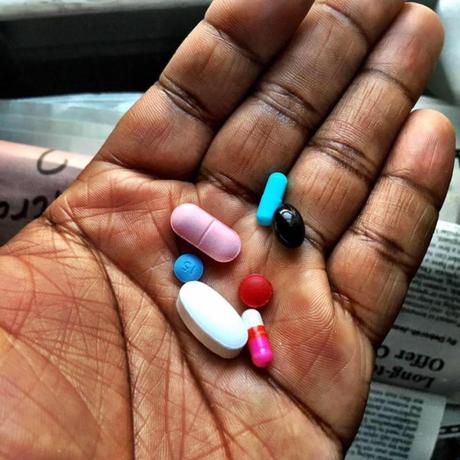
The war on opiods is real. Let me restate that” The war on opioids is real and those of us living with chronic pain conditions and invisible illness are at risk of losing essential medications that give us a quality of life.
The war on opioids is real
I say all this in acknowledgement of a real need to address “opioid abuse” and “substance use disorders” which are very real and claiming the lives of many individuals across the country. However, as someone living with chronic pain and a dependence on prescription opiioid medication to live a successful productive life, I cannot help but be fearful that the vilification and “war” on prescription opioid medication with broad sweeping generalizations is not only frightening by upsetting.
The purpose of this post is not to undercut the real need for legislative control and action around “substance use disorder” but to help dispel the myths and misunderstanding of the categorizations of prescription dependence vs illegal and prescription drug addiction (now known as substance use disorder).
What is Addiction
Psychology Today defines addiction as:
“An activity initially enjoyed by a person (eating, drinking, drug-taking, etc.), but with repeated use and higher amounts needed to achieve a similar ‘high’ that can become life-threatening for the person’s level of work and life responsibilities”.
Medical and substance abuse communities have found that there are neurochemical differences between a normal brain and an addict’s brain. There are even perceived differences between addiction versus the abuse of a substance.
Addiction can occur without physical dependence; consider cocaine or methamphetamine both have little outwardly apparent withdrawal syndrome but addiction to either can devastate lives. Non-substance addictions such as gambling, sex or internet also have no physical dependence. What is common to all these addictions is the unnatural cravings that prompt the compulsive behaviors. (National Alliance of Advocates for Buprenorphone Treatment)
Physical dependence can occur without addiction; this is the common experience of most chronic pain patients who are able to take their opioid medication as prescribed for pain but don’t develop the uncontrollable compulsion and loss of control. A desire to avoid withdrawal is not addiction. (National Alliance of Advocates for Buprenorphone Treatment)
Studies have shown that addiction can form in individuals through a combination of genetic makeup and poor social skills. This is why the offspring of addicts are prone to becoming addicts. One study showed that a child of a parent with a drug or alcohol addiction is eight times more likely to develop an addiction as well.
What is Dependence
‘Dependence’ is a term used to describe a person’s physical and psychological loss of control due to substance abuse. If a person uses many drugs and develops a physical dependence on these drugs, that person is usually described as dependent. That alone isn’t always an addiction, but it can accompany addiction. Today, medical experts refer to ‘dependence’ usually around a person’s constant drug and alcohol abuse. Conversely, chronically addictive behaviors like compulsive sex, constant gambling, and even non-stop Internet usage can be seen as an ‘addiction.’

Why Understanding the Difference Matters
According to recent reports; atleast 100 million people with chronic pain aren’t getting the relief they need and are seeking alternatives.
Because of some healthcare workers’ attitudes toward opioids and media coverage of the opioid epidemic, when patients bring up the fact that they live with pain, they’re looked at with skepticism, questioned relentlessly, second-guessed, and judged. This creates a conundrum for physicians that because they aren’t adequately trained to deal with chronic pain conditions or don’t believe in what the cannot see; create a disparity in how they prescribed opioid medication.
There can be an all or nothing approach to the prescription of pain killers with patients who for instance have a surgery having medication over prescribed. This creates a situation where leftover medication unintentionally getting into the hands of children or worse finding itself to the black market because it wasn’t safely stored or disposed of. On the flip side, chronic pain patients may be cut off from essential pain medication because that same physician that over prescribed to a surgery patient fears long term addiction in a chronic pain patient.
Representation Matters
In addition to these disparities, there’s not a lot in the media about chronic pain patients. Chronic pain is not visible therefore it is hard to fully comprehend how someone can live with vacillating debilitating pain. Additionally because the media is all about “juicy” attention grabbing rhetoric; speaking about opioid use in the context of addiction sells more headlines and is a more interesting story than highlighting the experiences of chronic pain patients. It’s all about addiction and people abusing their pills. But there are pain patients suffering long term and they can’t get any help from the medical community, many experts explain. “No one is willing to listen to them.”
Again there’s no question that the use of opioid medications in the United States is a dangerous and mounting problem. The statistics speak for themselves:
- In 2015, opioid overdoses killed approximately 33,000 people, up from around 11,000 10 years prior.
- Opioid abuse has been called the deadliest drug epidemic in U.S. history.
But the epidemic is driven primarily by illegal — not medical — abuse of prescription pills.
- A study of over 135,000 opioid overdose victims found that just 13 percent were chronic pain patients.
How to End the Myth
I take opioid medication every single day to function and live. I am not an addict.
The single most important thing people can do is to listen to chronic pain patients and advocates when they share their life experience. To often people judge and stereotype based on what they think they know or narratives that they have seen. Everyone’s experience is different and the statistics show that most chronic pain patients are not addicts. Chronic pain patients should advocate for themselves and share their stories. The more we know the more we can understand to listen.
At a systemic level, in 2013, the American Psychological Association (APA) released the fifth edition of the DSM. In this edition, the definitions revolving around addiction were changed once again. The APA ditched both “substance abuse” and “substance dependence” in favor of “substance use disorder.”
Part of the reason for the change was the confusion surrounding the word ‘dependence.’ The hope is that defining an addiction as a substance use disorder was a more inclusive way to identify people who need help, but may not have a debilitating addiction.
Advocacy
I join the U.S Pain Foundation as a Pain Ambassador or spokesperson for issues and legislation surrounding chronic pain patients, advocacy, and showing everyday through my work with 540WMain Learning Academy and beyond the face of chronic pain. Each of us is different and unique. Laws and legislation have to reflect this diversity. While reform is absolutely necessary, some of the restrictions on opioids have unintentionally harmed legitimate patients who rely on opioids to manage their pain and use their medications appropriately. As a result, these individuals are left with their pain under-treated or untreated. A failure to treat pain appropriately, however, leads not only to unnecessary physical suffering, but also increased disability, lost productivity, depression and anxiety, and even suicide.
Says the U.S Pain Foundation:
“In order to effectively address the opioid epidemic, we must enact balanced reforms that consider the needs of both patients with pain and patients with substance use disorder. Balanced reforms include things like increased access to alternative treatment options (including complementary and integrative medicine and medical marijuana); prescription monitoring programs; abuse-deterrent formularies; increasing public awareness about safe medication disposal; better understanding of risk factors and appropriate screening for substance use disorder; and so on.” Read their full position statement.
To learn more chronic pain visit the U.S Pain Foundation
Sources: Addiction Center | The Recovery Village | Healthline | U.S Pain Foundation |(National Alliance of Advocates for Buprenorphone Treatment)
Advertisements &b; &b;
